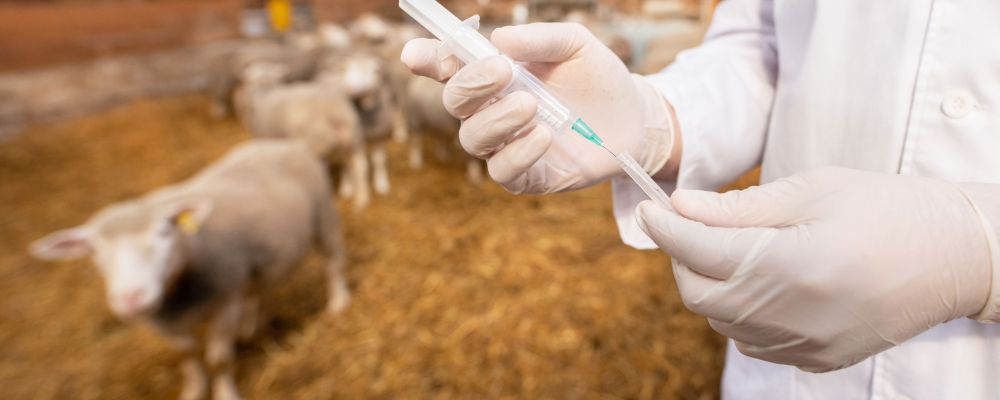- The ANMV
- Our activities
- Administrative formalities
- Our Publications
- Europe & International
- Europe
- International
- World Organisation for Animal Health (WOAH)
- International harmonisation of technical requirements for the registration of veterinary medicinal products (VICH)
- Pharmaceutical inspection cooperation scheme (PICs)
- Organisation for Economic Co-operation and Development (OECD)
- Codex Alimentarius
- Cooperation agreements
- E-learning module
Portal Veterinary medicinal products

Maximum Residue Limits (MRLs) for veterinary medicinal products
Maximum residue limits allow for the definition of acceptable thresholds in foodstuffs derived from treated animals of substances contained in veterinary medicinal products
In the field of food, a residue is a substance present on or in a food product, following the application of pesticides, biocides or the use of veterinary medicinal products.
The administration of veterinary medicinal products to food producing animals may result in residues in food (meat, fish, milk, eggs and honey) obtained from these treated animals.
It is therefore necessary to establish acceptable thresholds for substances contained in veterinary medicinal products for all foodstuffs of animal origin. A regulatory threshold known as maximum residue limits (MRLs) is thus defined taking into account the toxicity of the substance and the possible exposure of the consumer of foodstuffs. Beyond this threshold, the marketing of the food is not allowed.
Maximum residue limits are set by decision of the European Commission based on a scientific opinion delivered by the European Medicines Agency (EMA). The MRL is regulatory and applies to a substance for a specific commodity in the same way in Europe. Its respect implies the criminal responsibility of the producer of the foodstuff. Numerous annual official controls are carried out in all states of the European Union. Progress at the analytical level makes it possible to detect the presence of residues in food at ever lower levels.
The regulations adopted pursuant to Regulation No 470/2009 lay down the rules applicable to the assessment and establishment of MRLs and for management and control measures in foodstuffs of animal origin. Volume 8 Eudralex containing the maximum residue limit guidelines is no longer published by the European Commission.
The withdrawal period defined in the Authorisation for the placing on the market of a medicinal product shall be the minimum period between the last administration of a veterinary medicinal product to an animal and the production of food from that animal which, under normal conditions of use, is necessary to ensure that those foodstuffs do not contain residues in quantities harmful to public health.
Some substances are considered after evaluation by the European Medicines Agency to be outside the scope of the MRLs. These include excipients or substances naturally present in the body and which do not pose a danger to the health of the consumer. See the list “out of scope (PDF)”
Biological substances that do not require an MRL assessment are listed on another list. See the list “biological substances (PDF)”
The monitoring of the MRL procedures for veterinary medicinal products is carried out by the Department of Scientific Expertise (DES) of the National Veterinary Medicine Agency (ANMV) of the Anses.
Regulatory references
REGULATION (EC) NO 470/2009 OF THE EUROPEAN PARLIAMENT AND OF THE COUNCIL See Regulation-470-2009 (PDF) of 6 May 2009 laying down Community procedures for the establishment of residue limits of pharmacologically active substances in foodstuffs of animal origin, repealing Council Regulation (EEC) No 2377/90 and amending Directive 2001/82/EC of the European Parliament and of the Council and Regulation (EC) No 726/2004 of the European Parliament and of the Council
COMMISSION REGULATION 37/2010 OF 22 DECEMBER 2009 See Regulation-37/2010 (PDF) on pharmacologically active substances and their classification with respect to maximum residue limits in foods of animal origin.
In this Regulation, pharmacologically active substances are classified alphabetically in 2 tables:
- table 1 corresponds to the authorised substances : See Table 1 (PDF)
- table 2 refers to prohibited substances : See Table 2 (PDF)
The tables contain the following information: name of pharmacologically active substance, marker residue, animal species, MRLs, target foodstuffs, other provisions and therapeutic classification.
See also : EMA website on Maximum residue limits (MRL)